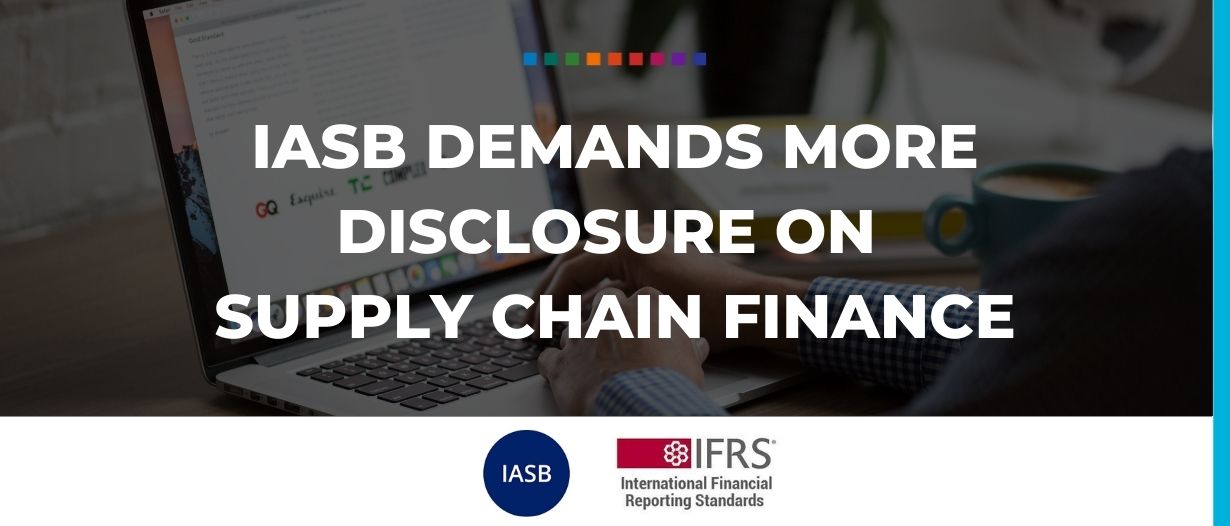The supply chain finance industry has been faced with a choice: increase disclosure or continue to face criticism. The increase in the controversy surrounding the financing techniques has led the International Accounting Standards Board (IASB) to demand transparency in financial statements. This is an effort to protect consumers by ensuring they have the necessary information to make informed decisions, as well as, ensuring liquidity within supply chains during times of higher risk.
What is Supply Chain Finance?
Supply chain finance (SCF) encompasses several different financing techniques presenting a cash flow solution that enables businesses to free up working capital trapped in global supply chains.
The Global Supply Chain Finance Forum (GSCFS), which aims to set commonly agreed standard market definitions for Supply Chain Finance and SCF-related techniques, differentiates between two large categories of Supply Chain Finance techniques: the receivables purchase category and the loan base category.
Why have the new regulations been proposed?
SCF, despite its many benefits for both corporates and banks, has been under increased scrutiny recently, leading some to question the need and efficacy of this financing instrument.
SCF benefits:
- Enables buyers to extend their days payable outstanding (DPO) without compromising the sellers’ day sales outstanding (DSO).
- Increases supply chain stability and predictability
- Allows sellers to receive early payment without relying on local banks
- Sellers may receive a better rate than from local financial institutions
- Banks are able to provide services to their clients and their supply chains without needing to have pre-established customer relationships
As a result of the increased negative publicity, the International Accounting Standards Board (IASB) who, similarly to GSCFF, set global standards, have decided to create new standards. These new standards will likely come into force in a large part of Europe, South America, Australia, Canada, Middle Eastern and Sub-Saharan Africa, and a portion of Asia Pacific, as these regions heavily utilise this financing instrument.
The primary criticism surrounding this financing technique revolves around the belief that clients are not provided with sufficient information to make educated decisions.
Furthermore, a 2020 staff paper by the IFRS prepared for the IASB board found that SCF programmes and initiatives could have a significant impact on the companies that initiate them if payment terms are extended beyond industry standards, as there is a high risk of facilities being withdrawn in times of stress, thus endangering liquidity.
The paper also found that market participants often struggle to effectively compare financial statements between SCF users and non-SCF users. This type of financing can make it more challenging to compare cash flows, between two companies – a SCF user and a non-SCF user. The challenge lies in the possibility of having trade payables on a balance sheet that are payable to banks but are not classified as bank debt, portraying a very different financial position. This, inevitably, leads to a lower level of transparency, as there is wiggle room and ambiguity in the current standards allowing corporates and banks to get creative when putting together financial statements, which some in the industry have criticized.
What is changing?
It should, therefore, come as no surprise that one of the largest regulatory bodies, the IASB, is calling for an increase in disclosure. If the proposed changes are approved it will become compulsory for key terms and conditions of a supplier finance arrangement, aggregate amounts of payables for SCF arrangements, the payables which have already been received and the length of payment terms, to be disclosed.
This would directly address one of the main critiques to SCF by enabling market participants to have sufficient information to make informed decisions and understand which companies deploy SCF techniques and which don’t.
Nevertheless, there is a caveat. Though some companies do get creative when presenting their financial information, a large portion of the major SCF users, such as supermarkets in the UK, already disclose information in a clear and informative manner. This begs the question: will these new standards truly make a difference and help restore SCF’s tarnished reputation?
Industry experts have argued that this is unlikely to affect market participants who already operate with a certain degree of transparency. The new standards are likely to, however, impact businesses that struggle with transparency.


























